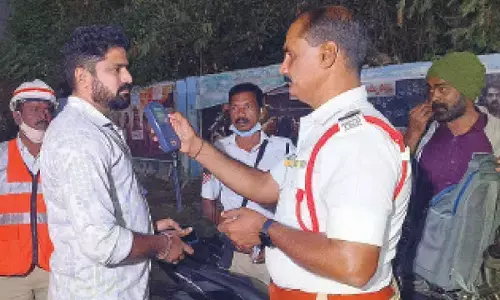BJP Faces Major Setbacks In Punjab And Haryana In 2024 Lok Sabha Elections

- In the 2024 Lok Sabha elections, the BJP failed to win any seats in Punjab and lost five in Haryana.
- Key factors included the urban-rural divide, consolidation of Jat voters by Congress, rising unemployment, and low urban voter turnout.
The BJP faced a dismal performance in Punjab and Haryana in the Lok Sabha election results declared on Tuesday. The party failed to win any seats in Punjab and lost five seats in Haryana, where it had previously secured all 10 seats.
Interestingly, while the BJP nearly doubled its vote share in Punjab, it could not retain the two seats it had won in 2019. In Haryana, the party lost half of its seats and 12 percent of its vote share to the Congress.
- Five Reasons for BJP's Poor Performance in Punjab and Haryana
- The Urban-Rural Divide
A significant factor was the urban-rural divide. Most voters in Punjab and Haryana reside in rural areas—65.12 percent in Haryana and 62.52 percent in Punjab. The BJP's traditional support base is in urban and semi-urban areas, and the lack of a rural base hurt the party. The BJP had to form an alliance with the JJP in 2019, as it couldn't secure enough rural or Jat votes. The 2020 introduction of controversial farm laws further widened the gap between rural and urban voters, and the farmers' protests damaged the BJP's image in rural areas.
- Consolidation of Jat Voters
Despite ruling Haryana for a decade, the BJP struggled to attract the Jat community, which makes up 22 percent of the electorate. This group remained loyal to the Congress, INLD, and JJP. The Congress, which increased its vote share by 15 percent in the 2024 elections, successfully consolidated the Jat votes.
- Congress's Social Engineering Success
In 2019, the BJP attracted voters from various communities except the Jats, achieving a 58 percent vote share. This time, their vote share dipped to 46 percent as their efforts to attract non-Jat and OBC voters fell short. The party's last-minute replacement of Chief Minister Manohar Lal Khattar with Nayab Singh Saini to appeal to the OBC community did not overcome anti-incumbency sentiment.
- Rising Unemployment
Unemployment also played a significant role. According to NSSO data, Haryana and Punjab both have an unemployment rate of 6.1 percent among those over 15. Allegations that jobs were being given to non-Punjabis and controversies over government recruitment policies, including the Agniveer scheme, which the Congress promised to end if elected, further hurt the BJP.
- Poor Urban Voter Turnout
The low voter turnout in urban areas also negatively impacted the BJP. In Haryana, voter turnout dropped to 64.80 percent from 70 percent in 2019, with more votes cast in rural areas. Similarly, in Punjab, the turnout was 62.80 percent, with none of the assembly segments in the nine Lok Sabha seats reaching a 70 percent turnout. Urban voter apathy, combined with factors like the long weekend and rising temperatures, kept many voters indoors, affecting the BJP's traditional urban vote bank.
Notably, issues like the construction of the Ram temple and national security did not resonate enough to secure votes for the BJP in Punjab and Haryana.
















